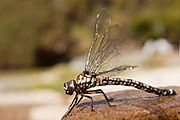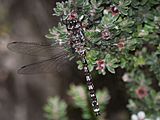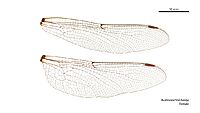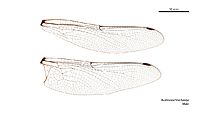Lesser Tasmanian darner facts for kids
Quick facts for kids Lesser Tasmanian darner |
|
|---|---|
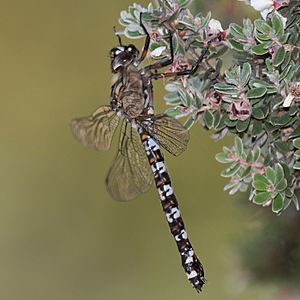 |
|
| Female | |
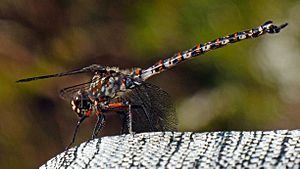 |
|
| Male | |
| Conservation status | |
| Scientific classification | |
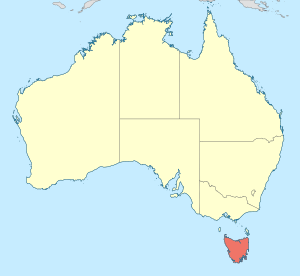 |
The Lesser Tasmanian Darner (scientific name: Austroaeschna hardyi) is a type of large dragonfly. It belongs to a group of dragonflies called the Telephlebiidae family. This special insect lives in the streams and rivers of Western Tasmania, Australia.
This dragonfly is mostly dark in color. It has markings that are not very bright or flashy. The Lesser Tasmanian Darner looks quite a lot like another dragonfly found in the same area, the Tasmanian darner (Austroaeschna tasmanica).
Contents
About the Lesser Tasmanian Darner
Dragonflies are amazing insects known for their speedy flight and beautiful wings. The Lesser Tasmanian Darner is a great example of these creatures. It was first described by a scientist named Robert John Tillyard in 1917.
What It Looks Like
The Lesser Tasmanian Darner is a fairly large dragonfly. Its body is usually dark, which helps it blend in with its surroundings. Unlike some other dragonflies that have bright, colorful patterns, this species has more subtle, duller markings.
Both male and female Lesser Tasmanian Darners have four strong wings. These wings are usually clear, but they might have a slight tint. Dragonflies use their large, compound eyes to see all around them, which is very helpful for catching prey while flying.
Where It Lives
This unique dragonfly is found only in a specific part of the world: Western Tasmania, Australia. This makes it an endemic species, meaning it naturally lives nowhere else. It prefers to live near fresh water, such as clear streams and rivers.
These waterways provide the perfect home for the dragonfly's young, called nymphs. The adults fly around these areas, hunting for food and finding mates. The clean water is very important for their survival.
Its Life Cycle
Like all dragonflies, the Lesser Tasmanian Darner goes through several stages in its life. This process is called metamorphosis. It starts as an egg, then becomes a nymph, and finally turns into an adult dragonfly.
From Egg to Nymph
Female dragonflies lay their eggs in or near water. For the Lesser Tasmanian Darner, this means laying eggs in the streams and rivers of Tasmania. Once an egg hatches, a tiny creature called a nymph emerges.
Dragonfly nymphs live underwater. They are fierce predators, even at this young stage. They hunt small aquatic insects and even tiny fish. Nymphs breathe using gills and can stay underwater for a long time. They grow by shedding their skin multiple times, a process called molting.
Becoming an Adult Dragonfly
After several months, or even years, the nymph is ready to become an adult. It crawls out of the water, often onto a plant stem or a rock. Its skin then splits open, and the adult dragonfly slowly emerges. This is a delicate and amazing transformation.
Once its wings are dry and strong, the adult dragonfly takes its first flight. Adult Lesser Tasmanian Darners spend their time flying, hunting, and mating. They are important predators of smaller flying insects, like mosquitoes and flies.
Gallery



